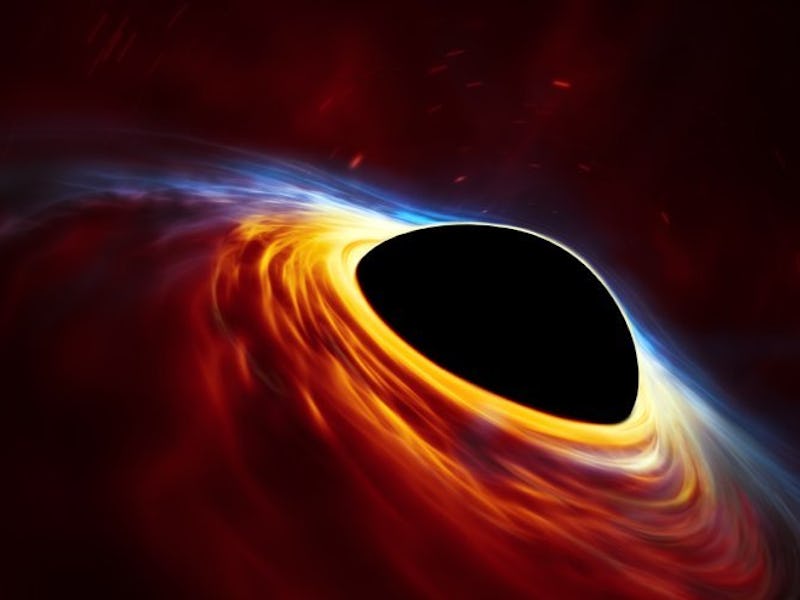A Spinning Supermassive Black Hole "Spaghettified" a Star

In 2015, astronomers detected what they believed to be the brightest supernova ever recorded. Cataloged as a rare superluminous supernova, it was at one point putting out 20 times more light than every celestial body in the Milky Way combined. Now, after ten months of observation, scientists have determined that it wasn’t actually a supernova, but miraculously something even cooler: A spinning supermassive black hole in the center of the galaxy absolutely shredding a passing sun-like star, a rare event so incredibly violent that the unfortunate star has been officially described as “spaghettified.”
Initially, researchers figured the light had to be a supernova because data indicated the supermassive black hole was so very supermassive that it would have simply swallowed the star whole. It’s only recent models that have suggested a black hole’s ability to turn a star into pasta. This is the first time a phenomenon like this — also known as a tidal disruption event — has been used to track a spinning supermassive black hole, which have historically proved more difficult to measure than the non-spinning ones, for reasons that seem pretty self-explanatory. The data, released today, was gathered primarily by the Las Cumbres Observatory in California and will be published in Nature Astronomy.
Superluminous supernovas (real ones, presumably) have been recorded before, and while they’re not fully understood, scientists do know they can’t spin faster than once per millisecond. The energy released by this tidal event, the official designation of which is ASASSN-15lh, was too much for that to account for. This meant the researchers needed to seek another explanation, which brings us back to why you have clicked on this helpful article.
A star can be spaghettified in days or it can be spaghettified in years, but the team thinks this particular star was spaghettified over the course of about two months. The process by which said star gets so profoundly fucked up begins as soon as it enters the black hole’s gravitational range (tidal force). It starts to get literally stretched toward the hole, increasingly, until it looks rather like an egg. Then things get real weird.
“As the star gets closer and closer, these tidal forces become more extreme and the star gets stretched more and more,” explained Las Cumbres astronomer and Einstein Fellow Iair Arcavi to Inverse by email. “Eventually it’s no longer a star, but a stream of former-star-stuff approaching the black hole. But it doesn’t directly fall onto the black hole. Half the stuff gets thrown out into space, and the other half overshoots the black hole and comes around like a slingshot. The front part of this stream now meets the tail of the stream (which is still on the way to its first approach to the black hole) and collides with it (so the poor star is now colliding with itself).”
Yikes.
Not pictured though: spaghetti
Spaghettification is, in fact, real, though team leader Giorgos Leloudas wrote to Inverse that the scale of what just happened is actually many orders of magnitude stronger (emphasis his).
Gravity applies to pretty much most things we know of, except for black holes, which give gravity the cold should and relegates it to curving space and time around their borders. Those are just regular black holes. Spinning black holes actually start to drag space and time down with them, in the sort of concentric swirl you might associate with a peppermint. We don’t know how common it is for supermassive black holes to spin, and this is the first time we’ve been able to measure one.
After its initial collision with said spinning supermassive black hole, the loose material from the star that got knocked loose starts to get sucked in too, like water being pulled down a drain. It continues to glow during this rather morbid process until it finally succumbs to what Arcavi describes as “eternal darkness.”
In the tradition of the raddest of scientific phenomena, we still can’t be 100-percent sure this was what the scientists think it was until they can duplicate it, which in this case means observing another of these extremely rare events. We’ll let you know.